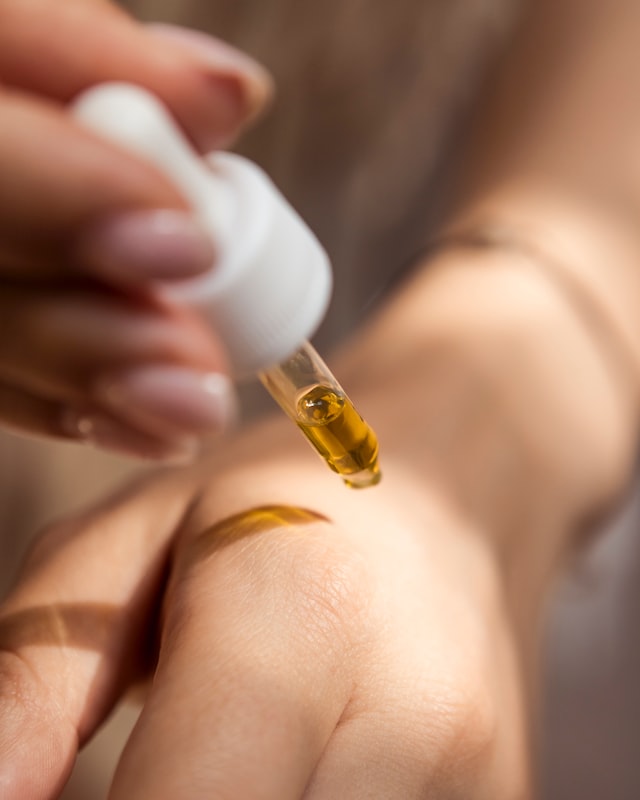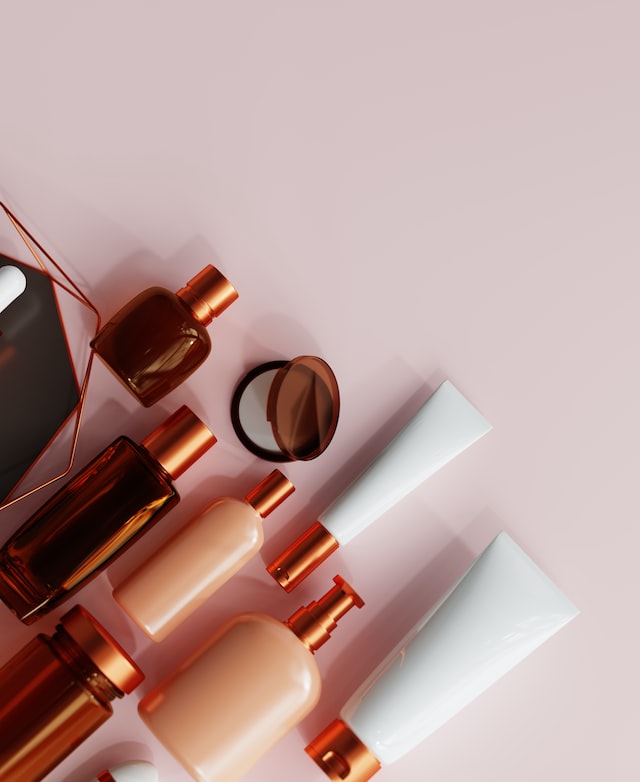The Skincare Scam
In part one of the series, we explore just how effective our natural skincare system can be.
Somehow it just doesn’t make sense to have 8 steps to just maintaining the health of your skin. And that too just for one’s face. Cleansers, toners, serums, treatments and the list just goes on. Oh, also you need two cleansers. You would think we’re all still powering the economy by digging through coal mines.
The idea that skin care products are largely unnecessary is not a new one. In a 2016 article for The Atlantic about quitting showering, physician and public health expert James Hamblin pointed out that commercials often promote the use of soap to remove oil from the skin and then lotion to moisturize it. He questioned the need for constant cleaning and moisturizing, asking why humans would be so disgusting as to require it.
Similarly, in a 2018 piece for The Outline, Krithika Varagur argued that the use of various ingredients in skin care products is tantamount to “violence” against the skin and that achieving “perfect skin” is an unattainable goal. Even dermatologists seem to agree.
Jules Lipoff, an assistant professor of dermatology at the University of Pennsylvania Perelman School of Medicine, called most skin care products a “scam” in a 2019 article for the Philadelphia Inquirer, claiming that the beauty industry preys on people’s insecurities and superstitions, and their desire for complicated solutions.
The Skin Moisturises Itself
The skin has several mechanisms to moisturize itself, which helps to keep it hydrated and healthy. Here are some of the key ways in which the skin moisturizes itself:
Natural oils: The sebaceous glands in the skin produce natural oils, such as sebum, which help to moisturize the skin. These oils act as a barrier, preventing moisture from evaporating from the skin’s surface. They also help to keep the skin supple and soft.
NMFs: The skin contains natural moisturizing factors (NMFs), which are substances that help to retain moisture in the skin. NMFs include compounds such as urea, amino acids, and lactic acid, which help to bind water to the skin and prevent it from evaporating.
Sweat: Sweat is a natural moisturizer that helps to hydrate the skin. When we sweat, the moisture on our skin helps to keep it soft and supple.
Hydration from the inside: Drinking plenty of water and eating a healthy diet can also help to keep the skin hydrated. When we are properly hydrated, our skin has a better ability to retain moisture.
Exfoliation: Regular exfoliation can also help to moisturize the skin. By removing dead skin cells, exfoliation helps to improve the skin’s ability to absorb moisture and nutrients.
The Skin Exfoliates Itself
The skin naturally exfoliates itself through a process called desquamation, which involves shedding of the outermost layer of dead skin cells. This process helps to remove old, damaged skin cells and reveal newer, healthier skin cells underneath.
Desquamation occurs as part of the natural cycle of skin renewal, which takes around 28 days in a healthy adult. The process is regulated by the skin’s natural barrier function, which is made up of a combination of lipids and proteins that help to maintain the integrity of the skin.
The process of desquamation involves the shedding of dead skin cells from the top layer of the skin, or the stratum corneum. As new skin cells are produced in the deeper layers of the skin, they gradually migrate upwards towards the surface of the skin. As they reach the surface, they become flattened and compressed, eventually forming a layer of dead skin cells.
These dead skin cells are then shed from the surface of the skin through a combination of physical and chemical processes. For example, movements such as rubbing or friction against clothing or bedding can help to physically remove dead skin cells. Additionally, natural enzymes in the skin, such as proteases, can help to break down and dissolve the bonds between dead skin cells, allowing them to be shed more easily.
Overall, the process of desquamation is a natural and important part of skin health and renewal, helping to keep the skin looking and feeling smooth, soft, and healthy.
The Skin Protects Itself
The skin is the body’s first line of defence against the external environment, and it has several mechanisms to protect itself:
Physical barrier: The outermost layer of the skin, the stratum corneum, acts as a physical barrier against environmental toxins, pollutants, and pathogens. The tightly packed cells of the stratum corneum prevent harmful substances from penetrating into the deeper layers of the skin.
Sebum production: The sebaceous glands in the skin produce sebum, a natural oil that helps to keep the skin lubricated and waterproof. Sebum also has antimicrobial properties that can help to prevent the growth of bacteria on the skin.
Immune cells: The skin contains immune cells that can detect and respond to pathogens that penetrate the skin’s barrier. These cells include Langerhans cells, which capture and process antigens, and T cells, which can directly attack pathogens.
Inflammation: When the skin is damaged or infected, it can trigger an inflammatory response. This response helps to recruit immune cells to the site of infection or injury and can also increase blood flow to the area, which can help to deliver nutrients and oxygen to support the healing process.

Skin microbiome: The skin is home to a diverse community of microorganisms, collectively known as the skin microbiome. These microorganisms can help to prevent the growth of harmful pathogens by competing for resources and producing antimicrobial compounds.
Overall, the skin’s ability to protect itself is a complex interplay of physical, chemical, and biological mechanisms.
The Skin Heals Itself
The skin is indeed an amazing organ that has a remarkable ability to repair itself from various forms of damage. When the skin is injured, whether it’s from a scrape, cut, sunburn, free radical exposure, or an infected blemish, the healing process begins immediately.
The skin recruits various types of cells to help with the healing process, including fibroblasts, which produce collagen and elastin to replace the damaged skin. In the case of sun damage, the skin sends enzymes and proteins to compromised cells to initiate DNA repair.
It’s worth noting that the skin has inherent photoprotective properties that can help shield it against the sun in the first place. However, using sunscreen is still highly recommended by dermatologists as a traditional product that can help protect the skin from harmful UV rays.
The skin is an incredible organ that has a natural ability to repair itself from various forms of damage. However, taking steps to protect it, such as using sunscreen, can help to prevent damage in the first place and support its natural healing processes.
The Skin Even Cleans Itself!
That’s correct! The lymphatic system plays an important role in removing waste and toxins from the body, including the skin. Sweat and sebum also help to keep the pores clear by flushing out debris and bacteria. However, it’s still important to wash your skin regularly with water to remove excess sweat, sebum, and any other impurities that may have accumulated on the skin’s surface.
Additionally, using a gentle cleanser can help to further remove dirt, oil, and other impurities without stripping the skin of its natural oils. It’s important to find a balance between cleansing the skin and not over-cleansing, as excessive cleansing can lead to dryness, irritation, and other skin problems.

Do we need skincare products at all?
From all this information about just how efficient our skin is at looking after itself. So then, should we even be using any skincare products at all? The answer isn’t that straight forward.
But we explore that in the next article of The Skincare Scam series.

![In the mood for good food but want to make an event out of it? Head over to the brand new @swing.khi. Yup, the all pink, picturesque restaurant is back! This time with better food too. Here's our recommendations:
1. Chimichurri Steak
2. Swing Signature Pasta
3. Stuffed Mushrooms
4. Seafood Chowder
It's on the pricier side, so works great for a date night or a special evening out with family or friends. They're located on Sehar, right next to Nandos.
Our favorite part: everything is so pretty! And the colors match UrbanLoungeOnline so well 💗🌸💗🌸💗🌸
.
.
.
[ UrbanLoungeOnline, Restaurants, Eating Out, Reviews, Karachi ]](https://urbanloungeonline.com/wp-content/plugins/instagram-feed/img/placeholder.png)



